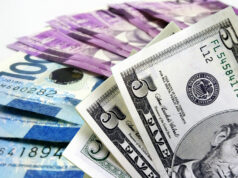DoF chief to seek growth outlook of IMF, WB
By Elijah Joseph C. Tubayan
Reporter
THE FINANCE CHIEF wants to know how the World Bank and International Monetary Fund (IMF), during their annual meetings this week, will address the global market turbulence brought by rising oil prices, the trade conflict in the world’s most advanced economies, and tightening monetary conditions.
The Philippines’ economic team, along with finance and central bank ministers of 189 member countries, will attend the first of a series of forums at the World Bank-IMF Annual Meetings in Bali, Indonesia, on Wednesday.
“I just want to discuss with them what is their projection for the growth of, first, the ASEAN (Association of Southeast Asian Nations), Asia, and the world, given the issues,” Finance Secretary Carlos G. Dominguez III told reporters on Monday.
“One, the oil price increase. Two, the trade dispute. I think it’s getting worse. It’s not getting better. Of course, the third issue is the interest rates normalizing,” he said.
“What will be the effect of the total growth around the world? We haven’t seen a study yet from World Bank addressing that issue,” added Mr. Dominguez.
Both the IMF and World Bank have flagged the said risks when they cut their outlook for the Philippines earlier this month to 6.5% for this year from 6.7% initially, but sustains 2017’s actual 6.7%.
The IMF also downgraded the world outlook for the first time since July 2016 to 3.7% for this year and 2019 from 3.9% in both years initially, noting the same risks Mr. Dominguez mentioned.
According to the Department of Energy’s oil monitor, crude oil prices were affected by increased geopolitical tensions in the Middle East, following an attack in Iran on Sunday, which was blamed on the US and its allies in the Persian Gulf.
The Philippines is relatively more sensitive to world oil price hikes as it imports most of its oil requirements, compared to other countries in the region.
Fuel is among the major drivers of inflation. As of September, the average rise in prices stood at its weakest level in nine years, at 6.7%, from 6.4% in August and 3% in September last year. This took the nine-month average to 5%, exceeding the central bank’s 2-4% target band.
The World Bank and IMF in their economic assessment reports for the Philippines flagged both US-China trade tensions and the US Federal Reserve’s interest rate hikes as downside risks to the outlook
Such developments will trigger bigger capital outflows, as well as in similar emerging market economies.
This is seen to widen further the country’s current account deficit and put more pressure on the peso — already among the worst-performing emerging market currencies trading above P54 per dollar — to weaken further, and feed into inflation.



